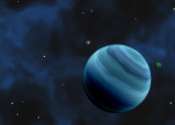Explaining Parker Solar Probe's magnetic puzzle
When NASA's Parker Solar Probe sent back the first observations from its voyage to the Sun, scientists found signs of a wild ocean of currents and waves quite unlike the near-Earth space much closer to our planet. This ocean ...









